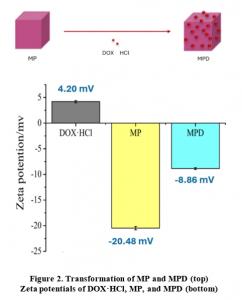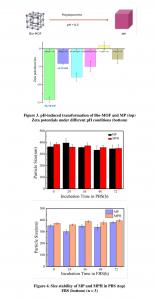BeNano Empowers Nobel-Winning Metal-Organic Frameworks Research: Transforming MOFs into Measurable Science
BeNano empowers Nobel-winning MOFs research by precisely measuring particle size and zeta potential, transforming innovation into measurable science.
COSTA MESA, CA, UNITED STATES, October 15, 2025 /EINPresswire.com/ -- The Royal Swedish Academy of Sciences has awarded the 2025 Nobel Prize in Chemistry to Susumu Kitagawa, Richard Robson, and Omar M. Yaghi “for the development of metal–organic frameworks (MOFs)” — a recognition of their pioneering work in creating crystalline materials with unprecedented porosity and functionality.
MOFs, composed of metal ions linked by organic ligands, have been hailed as “designer sponges” for the molecular world. With surface areas larger than football fields per gram and tunable chemical properties, they can capture carbon dioxide, purify water, store hydrogen, and even deliver drugs precisely to targeted tissues.
But behind every MOF breakthrough lies a deeper challenge: understanding how particle size, stability, and surface charge determine real-world performance. These parameters influence how a MOF disperses in liquid, interacts with biological membranes or pollutants, and maintains functionality in complex environments. That’s where BeNano (Bettersize’s flagship nanoparticle size and Zeta Potential analyzer) becomes essential.
MEASURING THE INVISIBLE FORCES THAT SHAPE MOF PERFORMANCE
At the intersection of nanoscience and measurement technology, the BeNano series provides precise characterization of particle size, zeta potential, and molecular interactions—key indicators of MOF quality, stability, and performance.
Dozens of research teams worldwide have integrated BeNano into their MOF workflows, bridging fundamental chemistry with applied innovation. Representative studies using BeNano in MOF characterization are listed as under:
• Near-Infrared-Responsive CuS@Cu-MOF Nanocomposite with High Foliar Retention and Extended Persistence for Controlling Strawberry Anthracnose
Journal: Journal of Controlled Release
Volume: 367
Pages: 837–847
DOI: 10.1016/j.jconrel.2024.02.012
• MOF-Modified Dendrite-Free Gel Polymer Electrolyte for Zinc-Ion Batteries
Journal: RSC Advances
Volume: 14, no. 22
Pages: 15337–46
DOI: 10.1039/D4RA02200A
• Ultrasonic-Assisted in Situ Synthesis of MOF-199 on the Surface of Carboxylated Cellulose Fibers for Efficient Adsorption of Methylene Blue
Journal: RSC Advances
Volume: 14, no. 21
Pages: 15095–105
DOI: 10.1039/D4RA02099E
• A Synergistic Polyelectrolytes-Zr-MOF Hydrated Construction Graphene Oxide Nanofiltration with Enhanced Dye Wastewater Remediation
Journal: Journal of Environmental Chemical Engineering
Volume: 12, no. 3
Article: 112865
DOI: 10.1016/j.jece.2024.112865
• POMOF-Derived Fe₂O₃@P₂W₁₈ with SWNT Nanocomposites as Colorimetric Biosensors for Glucose
Journal: Solid State Sciences
Volume: 149
Article: 107472
DOI: 10.1016/j.solidstatesciences.2024.107472
• MOFs/MXene Nano-Hierarchical Porous Structures for Efficient Ion Dynamics
Journal: Nano Energy
Volume: 129
Article: 110076
DOI: 10.1016/j.nanoen.2024.110076
This report focuses on how the BeNano from Bettersize Instruments supports MOF research, illustrated through the study “Engineering Bio-MOF/Polydopamine as a Biocompatible Targeted Theranostic System for Synergistic Multi-Drug Chemo-Photothermal Therapy” published in the International Journal of Pharmaceutics.
EXPERIMENTAL SECTION
Bio-MOFs were prepared by reacting Zn(OAc)₂·2H₂O and curcumin (Cur) in an ethanol and N,N′-dimethylacetamide mixture at 120°C for 48 hours. The resulting solid was washed with DMF and vacuum-dried. Dopamine coating produced MP, which was further modified with hyaluronic acid (HA) to form MPH. Doxorubicin (DOX) was then loaded into the PDA-coated structure, and an HA shell produced the final MPDH nanoparticles.
Characterization included SEM and EDS for morphology and composition, UV–Vis, FT-IR, and fluorescence spectroscopy for optical properties, XRD for crystal structure, and BeNano for particle size and zeta potential measurements.
RESULTS AND DISCUSSION
In figure 2, the zeta potential of MP was -20.48 ± 0.32 mV and increased to -8.86 ± 0.19 mV after DOX·HCl loading. Since DOX·HCl carries a positive charge (4.20 ± 0.22 mV), the change in zeta potential confirms its successful loading to the MP nanoparticle surface.
In figure 3, to determine whether curcumin release at low pH is linked to PDA layer detachment, zeta potentials of Bio-MOF and MP were measured at different pH levels. After 24 hours in PBS, MP’s zeta potential rose from -14.18 ± 0.73 mV (pH 7.4) to -4.13 ± 0.26 mV (pH 5.0), approaching that of Bio-MOF (pH 5.0). This observation suggests that the PDA layer detaches in acidic environments, exposing the positively charged curcumin molecules.
In figure 4, in addition to zeta potential, size characterization is equally important. Colloidal stability was assessed by incubating MP and MPH nanoparticles in PBS and FBS to simulate physiological and plasma conditions. Both samples maintained consistent size over 72 hours, showing strong resistance to aggregation caused by ionic strength (PBS) or protein adsorption (FBS). This demonstrates excellent biocompatibility and long-term stability.
This case shows how BeNano enables detailed characterization of curcumin-based Bio-MOFs and their PDA-coated forms (MP, MPH, MPDH). With accurate data on size, zeta potential, and stability, BeNano helps scientists transform Nobel-level discoveries into measurable, controllable, and dependable technologies.
FROM NOBEL CONCEPTS TO QUANTIFIABLE PROGRESS
The 2025 Nobel Prize in Chemistry highlighted MOFs as transformative materials for environmental and biomedical innovation. BeNano plays a pivotal role in precisely measuring their particle size and surface charge. At Bettersize, we take pride in helping researchers quantify the invisible, standardize the complex, and translate Nobel-level discoveries into measurable realities. As the global community continues exploring the limitless architectures of MOFs, BeNano stands as a trusted analytical partner — ensuring that every breakthrough is not just visionary, but verifiable.
ABOUT BETTERSIZE INSTRUMENTS
Founded in 1995, Bettersize Instruments is a global leader in particle characterization, offering innovative solutions for particle size, zeta potential, and powder property analysis. With over 100 patents, 43 global laboratories, and 22,000+ organizations using its technology, Bettersize empowers scientific and industrial communities to understand material properties, facilitate research, improve production efficiency and beyond.
Ricky Ponting
Bettersize Inc.
+1 833-699-7493
info@bettersize.com
Visit us on social media:
LinkedIn
YouTube
X
Legal Disclaimer:
EIN Presswire provides this news content "as is" without warranty of any kind. We do not accept any responsibility or liability for the accuracy, content, images, videos, licenses, completeness, legality, or reliability of the information contained in this article. If you have any complaints or copyright issues related to this article, kindly contact the author above.


